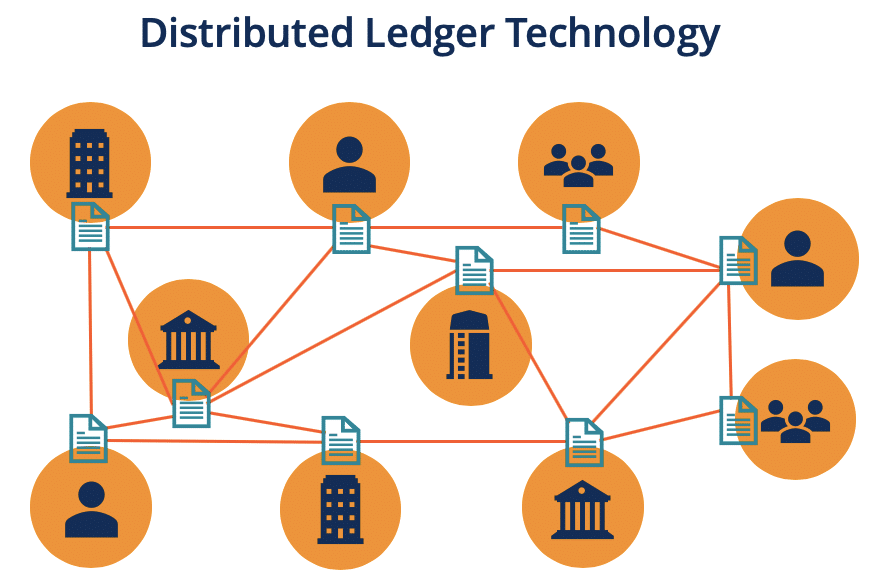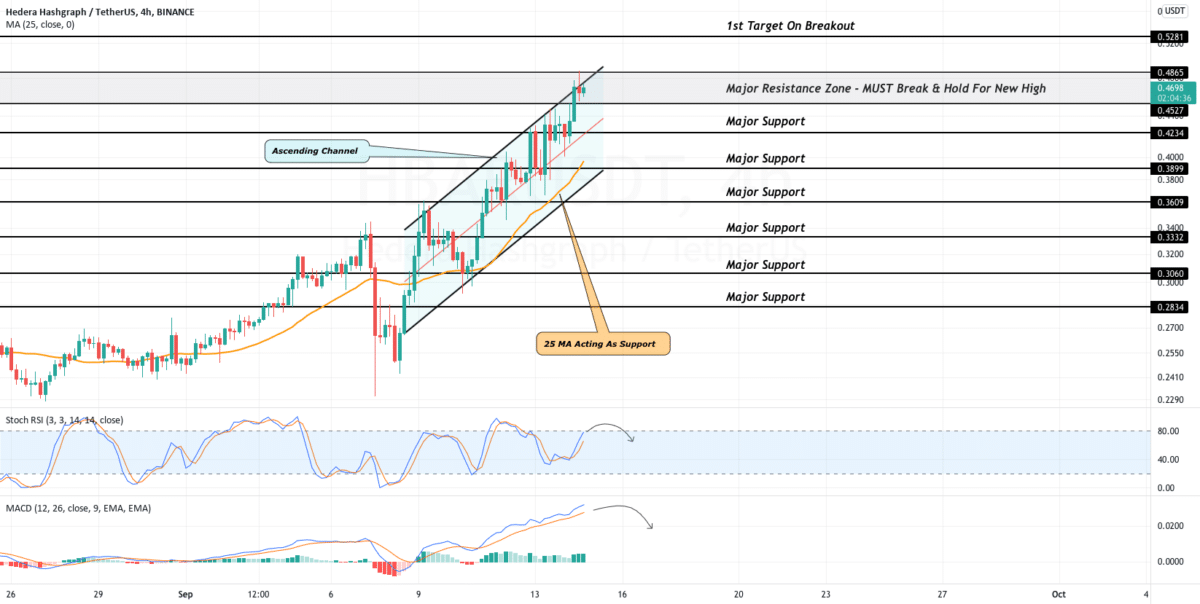A digital ledger is a database on an extensive computer network that helps the participants do transactions through an agreement called a consensus algorithm. These transactions on the database are permanent and cannot be edited or manipulated.
A peer-to-peer network helps keep the data secure by not involving any third party in between their transactions. This, at the same time, builds trust between the involved parties. The first cryptocurrency, Bitcoin, founded in 2008, was the implementation of blockchain — a distributed ledger. Another such ledger is the hashgraph which works on the same data structure and a better consensus mechanism than the first technology.
It is better to know the difference between these two technologies and then decide which one is better for you.
What is distributed ledger technology?

Before getting into the digital part, let’s first understand what a ledger is. In general, it is a database that is used to register transactions.
A banking system uses a centralized concept of keeping their data where they have the full authority to edit, manipulate or do anything for that matter. Every single transaction has to pass through the bank and then be noted into their ledger. This also is exposed to errors and double-spend problems.
Meanwhile, a distributed ledger contains a large number of nodes or computer networks to form a database. It is a decentralized database to record transactions that is available for everyone to verify and look into.
A distributed ledger’s most crucial point is that it does not need a central authority or intermediary to process, validate, or authenticate transactions. The two leading known technologies are the blockchain and the hashgraph, and we will look into both in the below section.
How does blockchain technology work?
It is a distributed ledger that has transaction records stored in the form of a block. This block is sent to the distributed network for the miners or validators to mine or validate. Then the transaction is safely written in the digital ledger.
Every time a new block of data is solved, it is added to the public ledger for every participant to verify. Blockchain technology is decentralized, meaning no single authority governs it as it is a peer-to-peer network.
BTC was the first implementation of blockchain in 2008, but the concept has existed since 1991. You can use it to make smart contracts and perform complex tasks.
Pros & cons of blockchain
Let us look into the pros and cons of this technology to understand it’s good or bad further.
| Pros | Cons |
| •Transparency It is open for the public to verify; it is also immutable, which means once the data is stored, you cannot edit or change it. | •Lack of developers Being a new technology, it exposes itself to minor industries and people, leading to fewer developers who can work on the technology. |
| •Oversimplified ecosystem The technology narrows down large and complicated processing steps into simple and fewer steps. | •Large energy consumption For the transaction to be validated, a consensus has to work and be processed; this, in the end, consumes a lot of energy. One of the examples is BTC mining that works on proof of work consensus. |
| •Faster transactions The existing banking sector takes time and has transaction failures, but the technology offers faster transactions with minimum fees. | •Keeping a private key The most crucial part of using this technology is having a private key called a wallet address. It would help if you kept your personal key safe and secured as missing it might lead you to lose your assets. |
How does hashgraph technology work?
Hashgraph, widely known to be an alternative to the first technology we mention. It is also a digital distributed ledger technology, which is compatible with an authorized ledger called Hedera Hashgraph.
The commitment of hedera is that it is the only known and first of its kind ledger that appropriates the swift, clear, and secure hashgraph consensus mechanism.
Hashgraph is an improved version of the digital ledger technology that advances security and decentralization by employing hashing. It is way better in terms of energy efficiency, stability, and security and, at the same time, can process thousands of transactions per second without suffering from speed difficulty when compared with blockchain.
HBAR is used to pay for network services, dApps, building peer-to-peer payment and micropayment business models, and protecting the network from intruders. The coin is currently available on 14 exchanges such as Bittrex, Galaxy Digital, Liquid, OkCoin, OKEx, and Upbit.

Pros & cons of hashgraph
To get a better understanding, let us look into its pros and cons.
| Pros | Cons |
| •Fast transactions Blockchain works by binding the data in one block, and this, of course, will need time. Hashgraph, on the other hand, uses a consensus that determines if the appropriate transaction is added to the ledger or not. | •Patent technology Blockchain got success fast because of its availability. Hashgraph is Swirlds patent making it not an actual public ledger. |
| •First of its kind It is one of its kind that uses hashing techniques. It is fair, efficient, and fast. | •No minging and earning Unlike blockchain and its applied consensus that allows mining and earning, hashgraph cannot be mined, and the only way to get it is to buy it. |
| •Energy-efficient Blockchain requires miners to use an intense amount of energy to validate a transaction. Hashgraph consumes just about 0.0002 KWh per transaction, making it energy-efficient and environmentally friendly. | •Ledger with permission Hashgraph is not publicly available for everyone. If you want to participate in the network, you need to get permission before you can join it. |
Hashgraph vs blockchain: key differences
- Consensus mechanism
Consensus is an algorithm that binds the participants on the distributed network with rules or protocols.
The two primary well-known censuses of the blockchain are proof of work and proof of stake. In comparison, hashgraph uses gossip about gossip and the virtual voting consensus.
Here the transfer of data is performed by one node to another in an arbitrary discipline. It gets completed when all the nodes are aware of each other’s data.
- Security
Blockchain uses a system called cryptography which is essentially encryption and decryption. The data storage and transaction both involve cryptography making it secure from third parties.
In contrast, the hashgraph appropriates Asynchronous Byzantine Fault Tolerance (aBFT), where the Hedera hashgraph assumes that there will be bad actors.
- Efficiency
In the case of blockchain, the faster a block is created, the more efficient the system is. As Hasgraph does not work on the block creation method, it is highly efficient. The gossip about gossip and the virtual voting mechanism of hashgraph makes it better.
- Speed
The consensus of blockchain-like proof of work is not very fast. It needs miners on the network to solve the complex mathematical problems to validate a transaction successfully and then add it to the blockchain, and hence this process takes time.
If you compare blockchain to hashgraph technology, you will find it highly efficient in terms of bandwidth and high transaction.
The transaction speed of blockchain is around 100 to 1000 based on contract implementation. In contrast, hashgraph can support 500,000 transactions per second.
- Development
The critical part for any technology to succeed is the number of people who want to use it. The adoption of blockchain is faster as it is open-source and can perform almost all the tasks. On the other hand, hashgraph still needs time to see the market adoption.
Final thoughts
By the knowledge shared in this article, you must feel the Hedra Hashgraph is better than blockchain. It is, but considering just the positives is inappropriate.
Blockchain is free and open-source, where you do not need anyone’s permission to work. In contrast, hashgraph is fast and reliable but not truly a public ledger.